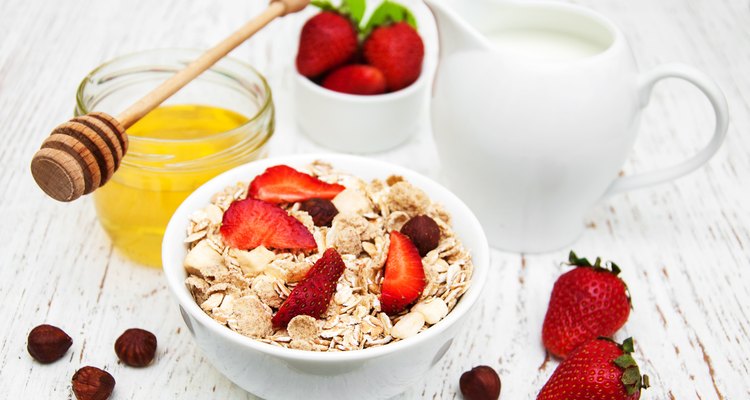
Almaje/iStock/Getty Images
Walking through the breakfast cereal aisle at the grocery store can be quite overwhelming with the numerous options to choose from. Fiber One and oatmeal constitute two popular breakfast choices that are marketed as being healthy. However, depending on your goals, one may be more suitable for you than the other.
Calories and Macronutrients
The original Fiber One breakfast cereal provides 60 calories, 1 gram of fat, 0 g of saturated fat, 25 g of carbohydrate, 14 g of fiber and 2 g of protein per 1/2-cup serving. As for oatmeal, a serving of 1/2 cup dry and plain oat flakes, whether it is quick oats, old-fashioned oats or steel cut oats, contains 150 calories, 2.5 to 3 g of fat, 0.5 g of saturated fat, 27 g of carbohydrates, 4 g of fiber and 5 g of protein. Instant oatmeal packets can provide between 135 and 170 calories, 2.1 to 2.6 of saturated fat, 0.4 to 0.6 g of saturated fat, 26.2 to 35.4 g of carbohydrate, 2 to 3g of fiber and 2.8 to 4 g of protein. Fiber One contains less calories for the same serving, but oat flakes usually expend after cooking, making 1/2 cup of dry oat flakes the equivalent to approximately 1 cup of oatmeal.
Fiber Content
Both Fiber One and oatmeal are good sources of fiber. A 1/2-cup serving of Fiber One provides 14 g of dietary fiber. On the other hand, 1/2 cup of dry oat flakes contains 4 g of dietary fiber. The current fiber recommendations, established in 2005 by the Institute of Medicine, recommends getting between 21 and 38 g of dietary fiber a day. Therefore, Fiber One can get you more than 56 percent of the daily value based on a 2,000-calorie diet, while an equivalent serving of oatmeal provides 16 percent of the daily value.
Type of Fiber
Fiber can be categorized as being insoluble or soluble, and each type of fiber impacts your health differently. Insoluble fiber has the role of giving bulk to the stool and is good at preventing constipation, while soluble fiber, by absorbing water and forming a gel-like substance in your gastrointestinal tract, keeps the stools soft in addition to lowering blood cholesterol levels and helping regulate blood sugar levels, according to HealthCastle.com. Of the 14 g of dietary fiber in 1/2-cup serving of Fiber One, 1 g is soluble and 13 g are insoluble, and of the 4 g of dietary fiber in 1/2-cup serving of dry oat flakes, 2 g are soluble and 2 g are insoluble. Therefore, if you wish to keep your bowels regular, Fiber One is the best option, but if you goal is to improve your blood cholesterol levels or diabetes control, oatmeal may be the best choice
Sugar Content
Fiber One is totally sugar free because it is sweetened with aspartame. Plain oatmeal contains 1 g of naturally-occurring sugar per 1/2 cup dry. However, if you choose instant flavored oatmeal, the sugar content reaches 10.9 to 15.5 g per packet due to the added sugar it contains. If your goal is to reduce the amount of sugar you eat, both plain oatmeal or Fiber One constitute good options.
Sodium Content
Surprisingly, many breakfast cereals contain a lot of added salt, or sodium. The American Heart Association recommends keeping your sodium intake below 1,500 mg per day. For example, a 1/2 cup serving of Fiber One provides 105 mg of sodium, while a packet of instant oatmeal contains 176 to 261 mg of sodium. On the other hand, plain oat flakes, whether quick oats, old-fashioned oats or steel cut oats, are sodium-free.
Related Articles
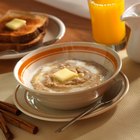
How to Microwave Steel Cut Oats

How to Prepare Quaker Oatmeal
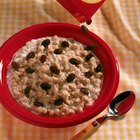
How to Make Quaker Oatmeal

How to Cook Steel-Cut Oats in a Slow ...

How to Know if Banana Bread Is Spoiled
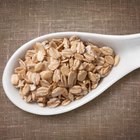
Does Instant Oatmeal Have Less Fiber ...

How Many Calories Do Oats Contain?

How to Get the Smell of Fingernail ...
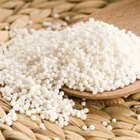
What Is the Nutritional Value of ...
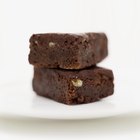
Can You Make Brownies Without ...
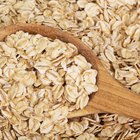
Can You Use Oatmeal to Remove ...
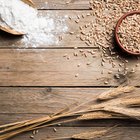
Nutritional Information for Rolled ...
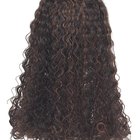
How to Make Hair Extensions Wavy

How to Soften Stiff, Starchy Material
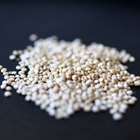
How to Cook Quinoa Flakes for Breakfast
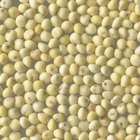
How to Cook Millet Meal
How Many Calories are in Pistachio ...
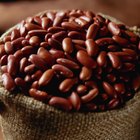
Calorie Count of Beans

How to Stretch a Hat
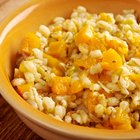
How to Cook Soaked Hulled Barley
References
Writer Bio
Aglaee Jacob is a registered dietitian. She has experience working with people who have diabetes, cardiovascular disease, hypertension and obesity issues. Jacob obtained a bachelor of science and a master of science, both in nutrition, from Laval University in Quebec City, Canada.
Photo Credits
Almaje/iStock/Getty Images